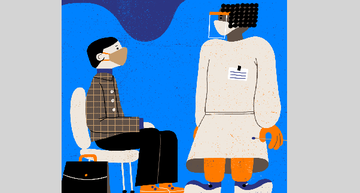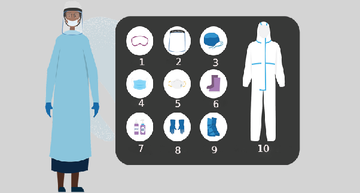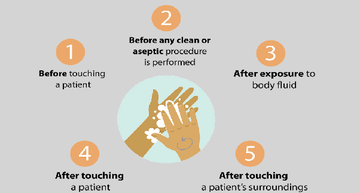What does Prevention Look Like at Work?

When visiting people at their homes it is important to protect yourself and your patient. You can do this by:
- Keeping a 2 meter distance between you and them
- Sitting at an angle from each other, not face to face, so if someone does cough it isn't right on you
- wearing your mask 😷 at all times
- Wash your hands with clean water 🚰 and soap 🧼 before and after the visit
If you are in contact with people in your community on a regular basis, remember to keep your own home clean to reduce the risk of spreading the virus to other household members. After coming back from working with community members, be sure to wash your hands after each place you visit. When you get home clean your clothes in boiling water.
Infection Prevention and Control (IPC)
The goal of IPC in the COVID-19 response is to maintain essential healthcare services by preventing the spread of COVID-19 among healthcare workers and patients. The faster a health facility can identify suspected cases, the easier it is to triage pagients and keep yourself and other patients safe. To quickly identify a suspected case: assess all patients at admission, have a COVID-19 screening quesionnaire, and have a triage station set-up.
Personal Protective Equipment (PPE) to use
Personal protective equipment (PPE) is special clothing or equipment that can protect you from infection. PPE includes goggles 🥽to protect your eyes; face shield for face protection; mask 😷 to cover your nose and mouth; gloves 🧤to protect your hands; booties, and a gown to protect your clothes and other materials.
When working in the health facility, know when you should be wearing PPE and where to take it on and off. When selecting PPE, make sure you find something that fits correctly. Wash your hands with soap and water before and after wearing PPE. Replace torn gloves right away and gloves right after contact. Use new gloves between procedures on the same patient, with new patients , or surfaces. Even if you are vaccinated, wear a mask & use PPE when you're with patients.

- Goggles
- Face Shield
- Medical Cap
- Surgical Mask
- N95 Mask
- Shoes Cover
- Alcohol Gel - Alcohol Spray
- Disposable Gloves
- Leg Cover
- Personal Protective Equipment (PPE)
Ask the supervisor these questions to be prepared:
- Is assistance required in putting on or taking of PPE?
- Where are the nearest hand washing stations?
- Is there a special area for putting on & taking off PPE?
- Does all PPE fit correctly?
- Is all PPE available to use?
- Where are the waste disposal facilities located?
Safe sanitation practices

Remember these top 5 moments when deciding to wash your hands:
- before touching a patient
- before any procedures
- if you are exposed to any fluids from another person
- after touching a patient
- after touching a patient's surroundings
Remember to use clean water 🚰 and soap 🧼 ! Ensuring the environment around you remains clean and things are properly disposed of can help to minimize the risk of COVID-19. Make sure to disinfect all equipment, such as thermometers, between every patient using 70% ethyl alcohol. To clean surfaces, use sodium hypochlorite at 0.5%. Linens used by patients should be removed by someone wearing PPE and put in a labeled container for cleaning or disposal.
Tips for case management
If a patient has a positive COVID-19 test, make sure they are isolated from others so they can't spread it any further. If their symptoms are severe, help them to get to a health facility. If their symptoms are mild, or it is difficult for them to isolate at home, check with your health facility for other locations set up for isolation where they can stay. If they have no symptoms, they can isolate at home, check on them every few days to make sure their symptoms have not worsened.
If a patient has been exposed to COVID-19, advise them to quarantine for 14 days from the last time they were exposed to the case. Also tell them to stay home and avoid contact with others. If symptoms develop, they should get tested.


